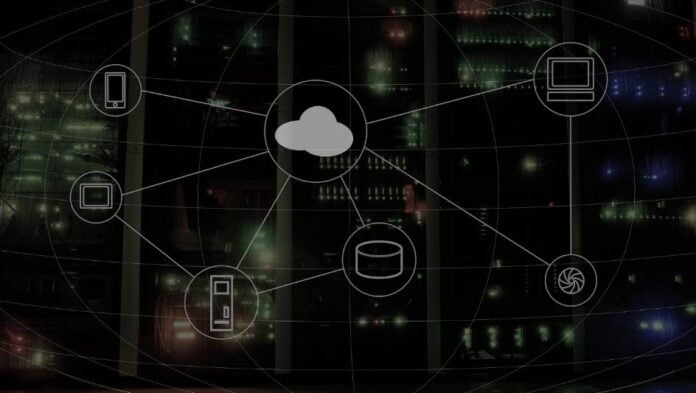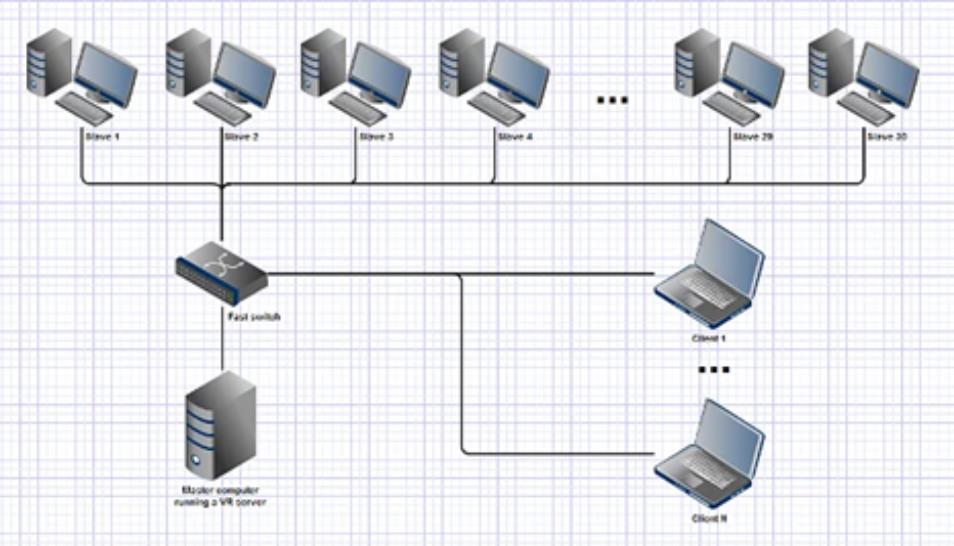In the last several decades, there have been tremendous improvements in computers and computer network technologies. With the emergence of the Internet, computers and their networking have exhibited tremendous development, such as today’s theme – distributed computing and cloud computing.
The terms Distributed Systems and Cloud Computing Systems relate to distinct entities, although the principle behind both is the same. To better grasp the ideas for each of them, a strong understanding of the distributed systems and knowledge of how they vary from the centralized computer is essential.
You may observe the use of cloud computing in most organizations nowadays, either directly or indirectly. For example, if we use Google or Amazon’s services, we immediately access the resources housed in Google or Amazon’s Cloud environment. Twitter is another instance of our tweets in the Twitter cloud. Faster data processing and computer networking may be seen as necessary for these new computing technologies to develop.
What is Distributed Computing?
When numerous autonomous devices connect via a central network to achieve a shared objective, distributed computing, distributed computing solves a difficulty using distributed autonomous machines and communicating with each other over a network. This is a computer method that can interact and solve one single problem on numerous machines.
Distributed computing is a much faster way to do computing activities than utilizing one computer. Some distributed computing features divide a single job amongst machines to simultaneously carry out the work, calling remotes and calling remotes for distributed calculations.
Need for Distributed Computing
Centralized computer systems, such as IBM for decades, mainframes have been available in technical calculations. One central computer controls all peripherals in centralized computing and conducts complicated calculations. However, centralized computer systems have been inefficient and costly to handle enormous amounts of transaction data and serve tons of online users simultaneously. This cleared the door to the commercial exploitation of similar technologies in the cloud and distributed computing.
Distributed Computing System Examples
- World Wide Web
- Hadoop’s Distributed File System (HDFS)
- ATM
- Google Indexing Server
- Google Web Server
- Cloud Network Systems
- Google Bots
The system is dispersed for a regular user, and the system is connected to multiple nodes that execute the assigned computer duties. The system is distributed as a single system. Consider from the user’s perspective the Google web server. Users are satisfied that the Google Web Server is a single system where they need to log in and look for the needed phrase when submitting a search query.
It is a Distributed Computer technique underneath which Google builds and distributes multiple servers in different geographical areas, providing the search results in seconds or milliseconds.
Benefits of Distributed Computing
- Compared to a centralized computer, distributed computing systems provide a superior price/performance rate, as adding microprocessors is economic rather than mainframes.
- The processing capacity of distributed computing systems is higher than centralized systems. Distributed computer systems enable increased expansion to add software and computing capacity as and when business demands increase.
What is Cloud Computing?
Cloud computing is a service that is provided to a network computer. For example, 10,000 people might process SETI data on their PCs via a screensaver over a dedicated computing network. And cloud computing might be when one million Apple customers keep all their MP3s on iCloud instead of PCs.
In cloud computing, IT resources and services like servers, storage, databases, networks, analytics, software, etc. are provided over the Internet. It is a computer technology that offers its users/customers host services through the Internet.
Also Check out: How Does Cloud Computing Helping the Healthcare Industry
Cloud computing delivers services, including hardware, software, and Internet networking resources. Cloud computer features include pooled computer resources, on-demand service, per-use payments, service providers’ services, etc.
It is divided into 4 separate kinds, for example.
- Private Cloud
- Public Cloud
- Hybrid Cloud
- Community Cloud
Examples of Cloud computing
- YouTube is the most acceptable cloud storage example hosting millions of video files uploaded, streamed, and downloaded.
- Picasa and Flickr are hosting millions of digital photos that enable their users to build online photo albums by uploading images to servers of their services.
- Google Docs is another type of cloud computing that enables users to hook up their server presentations, text documents, and slides. Google Docs allows users to change and publish other people’s work for viewing or changing.
Benefits of Cloud computing:
Cloud computing has numerous advantages and advantages, but we are the most relevant:
- Cloud computing makes it the most excellent resource for connection via companies’ cloud offerings at a reasonable cost for organizations.
- In place of conventional or orthodox use of e-mails and file-sharing, companies can make use of their cloud solutions to exchange information with workers.
Distributed Computing Vs. Cloud Computing
| DISTRIBUTED COMPUTING | CLOUD COMPUTING | |
| Distributed computing is solving a difficulty using distributed autonomous machines and communicating with each other over a network. | In cloud computing, IT resources and services like servers, storage, databases, networks, analytics, software, etc. are provided over the Internet. | |
| In basic distributed computing, a computing method may be used to communicate and solve one single problem by numerous machines. | A basic cloud computing technology may provide host services to your users/customers over the Internet. | |
| It is divided into three main types: distributed computing systems, distributed systems, and distributed power systems. | It is divided into 4 kinds such Public, Private, Hybrid, and Community Cloud. It has a varied ranking. | |
| The distributed computers have numerous advantages, such as flexibility, dependability, increased performance, etc. | Cloud computing has numerous advantages, including cost efficiency, flexibility, and reliability, scaling economies, world market access, etc. | |
| Distributed computing helps more quickly than utilizing a single computer when it takes much time to complete the computing activities. | Cloud computing delivers services, including hardware, software, and Internet networking resources. | |
| The objective of distributed computing is to distribute and complete a single job amongst several computers fast through cooperation between machines. | Internet Pay-per-Use Computing Services is available on request from the cloud computing service providers. | |
| Some distributed computing features spread a single job amongst the machines to simultaneously advance the work, remote procedure calls, and the remote method invocation for distributed calculations. | Some of the features of cloud computing include pooled computer resources, on-demand service, pay per usage, service providers, etc. | |
| Some cloud computing disadvantages include the possibility of a node failure, and sluggish connectivity might lead to problems. | Some cloud computing disadvantages may include less control, particularly public clouds, limitations on existing services, and cloud security. | |
Summery
The main difference between cloud and distributed computing is that cloud computing provides the software, hardware with complete infrastructure over the internet while distributed computing is dividing tasks into different computing machines that are connected through a network.
Check out: How cloud computing is changing the banking sector



